Mar 27, 2022 | awards, exonumia, medals, news
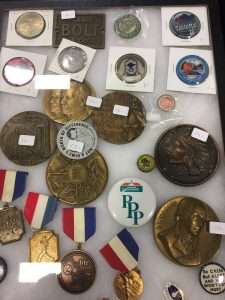
Medals, awards, casino chips, and a Challenge Coin
Medals come in many forms, from those that can be pinned to clothing to something equivalent to a token. They can be shaped, round, or a multilayered object presented to winners, participants, or for significant achievements.
Some people collect medals but may not consider themselves numismatists. Michael Phelps may not consider himself a numismatist but has one heckuva collection of Olympic medals, and Katie Ladecky is building quite a collection.
Challenge coins are a type of award. In its original intent, challenge coins are passed to someone deemed worthy of being honored by the issuer. Collectors take pride in collecting challenge coins like Brian Williams. During a segment of Nightly News, Williams showed off his collection. Over the last 10-15 years, challenge coins expanded beyond military service and civilian agencies. City agencies, law enforcement, and many others now issue challenge coins. It has opened the market to new collectors. Challenge coin collectors do not consider themselves numismatists, but they are as dedicated to collecting challenge coins as a Morgan dollar collector searching for VAMs.
As time progresses, there are new opportunities to collect awards and medals. Collections of medals and awards are now selling in estate sales and auctions. Families do not know what their loved ones collected and are selling below value. It is a tremendous opportunity to join this area of the market.
Awards and medals create an opportunity to expand collections and welcome more collectors to the community.
And now the news…
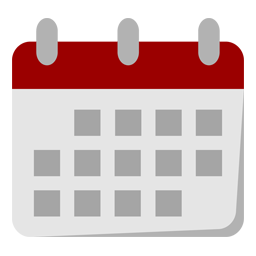
March 18, 2022
Princeton University Library’s (PUL) Numismatic Collection nearly tripled its Byzantine coin collection when it acquired 11,256 Byzantine coins from the estate of Dr. Chris B. Theodotou on March 8, 2022.

→ Read more at
infodocket.com

March 21, 2022
The United States' first woman to fly into space has lifted off a new mission, this time to orbit the nation in the form of a new circulating coin.

→ Read more at
collectspace.com

March 21, 2022
“Working with our partners Excir, we have introduced world-first technology to the UK capable of recovering precious metals from electronic waste in seconds." The Royal Mint is to have a go at a 21st-century approach to alchemy, turning electronic waste into gold.

→ Read more at
proactiveinvestors.co.uk

March 23, 2022
Fans in Samoa can start their own Justice League Silver Coin collection with 12 officially-licenced DC Comics coins celebrating their most legendary heroes & villains.

→ Read more at
supermanhomepage.com

March 23, 2022
The 2,000-year-old gold piece, perhaps worn by one of the murderers, could sell for $2 million

→ Read more at
smithsonianmag.com

March 26, 2022
The rising price of metals including nickel and copper has led to a unique valuation of the metal contained inside common U.S. coins. What Happened: The price of nickel has soared in 2022.

→ Read more at
benzinga.com
Nov 10, 2013 | awards, coin design, coins, commemorative, video
Last week, the U.S. Mint announced the winners of the Kid’s Baseball Coin Design Challenge from their website and on YouTube. The announcement was made by U.S. Treasurer Rosie Rios, who has been the most active Treasurer with the collector community.
Since children 13 and under were not allowed to compete for the National Baseball Hall of Fame commemorative coin, a program was set up to allow youngsters to participate. Here is the announcement video from Treasurer Rios:
Frankly, forgetting the fact that these are children and their drawing is not refined, some of these kids had better concepts for coins than some of the adults. Considering the winner of the adult contest was a college student (or a recent graduate) maybe younger designers are the future of coin design. Judge for yourself, here are the three winners of each age group:
-
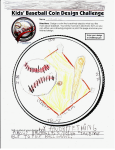
-
Winner of the 5 and under age group
-
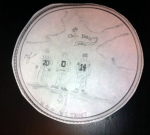
-
Winner of the 6 to 10 age group
-
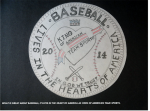
-
Winner of the 11 to 13 age group
I wonder if the winners could be introduced to Heidi Wastweet, medal artist who is also a member of the Citizens Coinage Advisory Committee. I visit her website to admire Wastweet’s work and wonder why she’s on the CCAC and not designing coins and medals for the U.S. Mint. Can you imagine if any of these kids can get lessons from Wastweet? We would be looking at great future for coin design if this could happen.
One can only dream.
Winning coin images courtesy of the U.S. Mint.
Aug 13, 2013 | awards, coins, news, shows
Some things are just too good to not share. Yesterday, Professional Numismatic Guild presented their annual awards at the eve of the American Numismatic Association’s World’s Fair of Money in the Chicago suburb of Rosemont. The picture accompanying the announcement is priceless.
Eloise Ullman, who is retiring soon as Executive Director of the Industry Council For Tangible Assets, was awarded the PNG’s Lifetime Achievement Award in recognition of her years of dedicated service and achievements in numismatics.
The award was presented to Ullman by ICTA Industry Affairs Director and PNG Associate Member Diane Piret. Ullman has provided the numismatic hobby and profession with 23 years of service as ICTA Executive Director, and the PNG is grateful for her outstanding efforts on legislative and tax issues facing dealers and collectors across the country.
Piret was honored with the PNG’s Significant Contribution Award for her40 years of dedication and significant contributions to numismatics. The award was jointly presented by PNG Board of Directors members Dana Samuelson and Barry Stuppler.
But the picture of Ullman’s reaction is priceless.
I met Ullman last year when I began to work with the Gold & Silver Political Action Committee. From what I could see she was a tireless working for ICTA for over 23 years and they will have a difficult time finding someone to succeed her.
Congratulations Eloise and the other PNG Award winnerss.
Image courtesy of Donn Pearlman.
Jan 11, 2013 | awards, coins, dollar, grading, Peace, rareties, silver, US Mint
Now that it is award season, Professional Coin Grading Service is getting into the act by release its first annual listing of the “PCGS Top 100 Modern United States Coins.” PCGS is using the rising popularity of modern coins, those minted since the change to base metals in 1965, to bring this list to the public. PCGS announced the list on January 11, 2013, during a luncheon at the Florida United Numismatics Convention in Orlando, Florida.
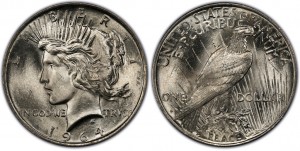
PCGS is offering a $10,000 reward to verify a genuine 1964-D Peace dollar, the number one coin on the new PCGS Top 100 Modern U.S. Coins list. This image is a PCGS artist’s conception of a 1964-D Peace dollar.
“Mint records indicate that 316,076 1964-dated silver Peace dollars were struck at the Denver Mint in May 1965,” said Don Willis , President of PCGS, “but they were all were supposed to be destroyed.”
PCGS believes that not every 1964-D Peace dollar was destroyed and has offered a $10,000 reward “just to view in person and verify a genuine 1964-D Peace dollar.”
In 1964 the price of silver rose to new heights that it made the value of ordinary circulating coins worth more for their metals than their face value. Because of this, silver coins were being hoarded by the public and becoming scarce in circulation. Western states that relied on hard currency including the gaming areas of Nevada needed the U.S. Mint to strike additional coins for circulation.
The striking of a dollar coin had a powerful ally: Senator Majority Leader Mike Mansfield, Democrat from Montana, whose state would be directly affected by the new coins. Although the numismatic press was not in favor of the measure because of its limited ability to solve the coin shortage, Mansfield pushed a bill through congress to authorize the Mint to strike 45 million silver dollars.
After much discussion, the Mint looked for working dies but found that few survived a 1937 destruction order. Those that did survive were in poor condition. Mint Assistant Engraver Frank Gasparro, who would later become the Mint’s 10th Chief Engraver, was authorized to create new dies of the Peace dollar with the “D” mintmark. Since the coins would mostly circulate in the west it was logical to strike them closest to the area of interest.
Treasury Secretary C. Douglas Dillon was opposed to the the coin and wrote a letter to President Lyndon B. Johnson saying that the coins would not be likely to circulate and be hoarded. After Dillon resigned, Mansfield questioned the new Secretary, Henry H. Fowler, who assured Mansfield that the coins would be struck.
Although Mint Director Eva Adams, who was from Nevada, also objected to striking the coin, the Denver Mint began trial strikes of the Peace dollar on May 12, 1965.
When the coins were announced three days later, coin dealers immediately offered $7.50 per coin which would ensure that they would not circulate as intended. Everyone saw this as a poor use of Mint resources during a time of sever coin shortages. Adams announced that the pieces were trial strikes never intended for circulation and were later melted under reportedly heavy security.
To prevent this from happening again, Congress added a provision in the Coinage Act of 1965 (Public Law No. 89-81; 79 Stat. 254) that put a moratorium on striking silver dollars for five years.
There have been reports that some Peace dollars were struck using base metals (copper-nickel clad) as experimental pieces in 1970 in anticipation of the approval of the Eisenhower dollar. The same reports also presume these coins have been destroyed.
“It sometimes takes years for famous coins to surface,” said Hall. “Until 1920, no one knew there actually were 1913 Liberty Head nickels in existence. Until 1962, no one knew the 1804 Draped Bust silver dollar and the other coins in the special presentation set given by the United States to the King of Siam in 1836 were still in existence.”
“When we offered a $10,000 reward in 2003 to be the first to see and authenticate the long-missing Walton specimen 1913 Liberty Head nickel it resulted in the re-discovery of that coin after a 41-year absence from the hobby,” Hall continued. “Perhaps this new reward offer will help solve the mystery of whether any 1964-D Peace dollars survived the melting pots. It’s the number one modern U.S. coin.”
For collectors of silver crown-sized coins and large U.S. dollars, the 1964-D Peace dollar is the ultimate fantasy coin. As someone who collects silver coins including modern bullion issues, it should come as no surprise that I chose the 1964-D Peace dollar for this blog’s logo. My version was made using Photoshop and colored to not look “real” to avoid potential issues from our law enforcement friends at the Department of the Treasury.
It would be difficult to put a price if a version of the coin is found. It would certainly be a unique coin whose auction would start well out of my price range—maybe set a record for being the highest price paid for a single coin, topping the 1933 Farouk-Fenton Saint-Gaudens Double Eagle that sold for $7,590,020 in 2002.
As part of the announcement, PCGS announced the top five in the PCGS Top 100 Modern U.S. Coins as follows:
- 1964-D Peace Dollar: The most controversial and one of the most famous of all modern issues.
- 1975 proof no “S” mintmark Roosevelt dime: Only two known, and one recently sold at auction for $350,000.
- 1974 aluminum Lincoln cent: 1,570,000 were minted but only one is known and is graded PCGS MS62.
- 1976 proof no “S” mintmark Bicentennial Type 2 Eisenhower dollar: only one example is known.
- 2000-W proof Sacagawea dollar struck in 22 carat gold: 12 are known
1964-D Peace dollar image courtesy of PCGS.
Nov 24, 2012 | awards, exonumia, medals, personal
Cool collectibles come in various forms from a number of sources. This week, I received a nice collectible just for doing something I like to do: talk!
I have been a member of the Washington Numismatic Society for about a year and wanted to become involved. During the Whitman Show and the Maryland State Numismatic Association Annual Meeting, I was approached by the bulletin editor who is also a member of my home club sort of cornered me and convinced me to be the November program. He did not have to twist my arm (much) to get me to talk about Maryland Colonial Currency.
Not only have I posted articles about Maryland Colonial Currency (see this, this, that, and here), but I had published a full story in the Maryland Numismatist (Vol. 38, No. 1) that won the MSNA Article of the Year.
Since writing the article I had purchased a few notes and found more information. So I had taken the first presentation [PDF] I made to my coin club that inspired the articles and interest in Maryland colonial currency, and edited it for time and content.
After the presentation, I was presented with a bronze medal from WNS’s 75th Anniversary. WNS is the one of the oldest numismatic organizations in the area who celebrated their 75th anniversary in 2002. The medal is 38mm in diameter and 4mm at the thickest part of the design. It is nicely made by the Medallic Art Company of New York.
Doing this presentation not only reminded me that I have more research to fill in some of the details, but that I am missing notes in my collection. I also found a new group of collectors in the area to learn from, which is always good. I paid my dues for 2013 and hope to attend more meetings.
Nov 5, 2012 | awards, coins, history, medals, US Mint
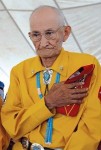
Navajo Code Talker George Smith
After learning that Japanese intelligence experts broke every code the United States armed forces could devise, Philip Johnston, a missionary who learned the difficult Navajo language, proposed to create a code based on that spoken-only language. Johnston recruited 29 Navajo native speakers and they devised a code based on the Navajo language that Japanese intelligence was never able to decipher.
From the 200 word code, it grew to over 600 words and required 400 additional native Navajo soldiers to help with the communications across the Pacific theater.

President George W. Bush presented the Congressional Gold Medal to Navajo code talkers on July 26, 2001.
As part of the authorizing legislation, the U.S. Mint produced bronze versions of the medal for the public. These medals are no longer for sale by are still on sale at the U.S. Mint. [Correction complements of the Mint News Blog]
“This news has saddened me. Our Navajo Code Talkers have been real life heroes to generations of Navajo people. They have brought pride to our Navajo people in so many ways. The Nation’s prayers and thoughts are with the family at this time as they mourn the passing of a great family man who served his country and protected his people,” President Shelly said.
We are all saddened by the passing of this true American hero. May his family and friends take comfort and pride in his memory.
The 2000 Navajo Code Talkers Bronze Medal sold to collectors by the U.S. Mint
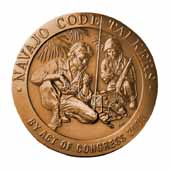
- Obverse
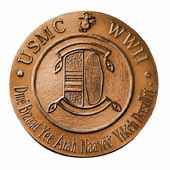
- Reverse
Credits
- † From “Semper Fidelis, Code Talkers” by Adam Jevec.
- Photo of George Smith courtesy of Navajo Times photographer Paul Natonabah via Navajo Nation President Ben Shelly’s website.
- Congressional Gold Medal Presentation image courtesy of the White House Photo Office.
- Bronze medal image courtesy of the U.S. Mint.
Aug 8, 2009 | ANA, awards, shows, US Mint
It is no surprise that there have been a few announcements at the American Numismatic Association’s World’s Fair of Money.® Of the announcements, I found three very interesting stories.
I think the biggest announcement is that the US Mint and the Smithsonian Institution’ National Museum of American History jointly announced that they have partnered to create traveling exhibits from the National Numismatic Collection. The Mint and Smithsonian Institution wants to create exhibits that will highlight U.S. history through its coinage.
The National Numismatic Collection is the largest collection in the world with over 1.6 million coins, notes, tokens, and medals. The collection spans from ancient times to modern days with the bulk of the materials being donated from the Mint’s transfer of its core holdings in 1923. The display of the National Numismatic Collection closed in August 2004 in preparation for the renovation of the American History Museum building. Although selected pieces were incorporated into other exhibits, the collection remains out of public view. Bringing the collection out to the public is a wonderful idea and I look forward to seeing how the curators at the Smithsonian and US Mint display the collection.
In another interesting announcement, the Numismatic Guarantee Corporation will begin to provide detailed grading to problem coins. In the past, NGC would “body bag” coins that were scratched, cleaned, or had other problems. If you wanted these coins encapsulated, the coins would have to be sent to their sister company, the Numismatic Conservation Service. NCS would be able to either conserve the coin and cross it to NGC or would encapsulate the coin with detailed grading. With this announcement, NGC will provide the grading services while NCS will continue to perform conservation.
This new service will simplify the grading and encapsulation of problem coins. Rather than have to wait for the submission to NCS to be processed and possibly NGC, NGC will do it all in one submission. It is also a good idea to include why the coin could not be graded in plain English on a different color label. I think this is a better idea to embedding cryptic code on a label that is not as easily identifiable, especially on the bourse floor of a busy show. More information that is easily understood is always better.
Finally, I want to congratulate Julian Leidman for being awarded the inaugural Harry J. Forman Dealer of the Year Award. Julian is a wonderful person, knowledgeable dealer, and an annual speaker at my local coin club where he talks to our membership about the state of the industry. Julian is one of the few dealers who always has people around his table talking coins or just kibitzing. Congratulations Julian on a well deserved honor.
Mar 8, 2009 | awards, medals
I had written about NBC Nightly News anchor Brian Williams and his collection of challenge coins. In short, challenge coins are medals that bears an organization’s logo or emblem that are carried by the members and given to outsiders as an honor. When a member draws his or her challenge coin and slaps it on the table, others must produce their challenge coin or buy a round of drinks for the group. It is very popular in the military.
The company I work for has an excellent relationship with the military and other federal agencies. Aside from our business, we have many employees and board members who are retired military officers. What makes us different from an ordinary Beltway bandit firm is that the company is a non-profit that runs three (soon to be four) Federally Funded Research and Development Centers (FFRDC). In short, an FFRDC “is a unique organization that assists the United States government with scientific research and analysis, development and acquisition, and/or systems engineering and integration. FFRDCs address long-term problems of considerable complexity, analyze technical questions with a high degree of objectivity, and provide creative and cost-effective solutions to government problems.” Our non-profit status gives us the freedom to make the right decisions without conflicts of interests getting in the way.
There is a tradition similar to challenge coins in my company. When a large project successfully ends, project members are awarded with a medal representing the project. Medals are either mounted on a plaque or framed in a coaster form. While most people do not use it as a coaster I was told that there was a time that team members would use the coasters during the celebration of their accomplishment.
I have seen a few project medals given to co-workers. Most of these co-workers have been employed by the company longer than I have and were given the medals for projects that ended before I started working for the company. Many have more than one. Although I had worked on a few large projects I never received one… until now!
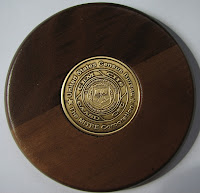 As I was leaving early on Friday a co-worker stopped me at my office door. She told me the project director was giving this to all team members handed me my first project medal. After not seeing one awarded in nearly eight years, I was very surprised. I stammered out a thank you and stopped to look at the medal.
As I was leaving early on Friday a co-worker stopped me at my office door. She told me the project director was giving this to all team members handed me my first project medal. After not seeing one awarded in nearly eight years, I was very surprised. I stammered out a thank you and stopped to look at the medal.
Within the wood coaster is a 38 millimeter bronze medal that has the name of the company and the agency that benefited from our work around the outer edge. The inner ring has the initials of the centers that had members participating in the project. In the middle is the logo of the government agency.
It is very satisfying to be a member of a significant, successful project. It is also great that one of the rewards is numismatically satisfying!
Aug 9, 2008 | ANA, awards, Baltimore, books, CCAC, shows
I heard many reports of a successful World’s Fair of Money, I wish I was able to attend other days. Unfortunately, with it being two-and-a-half weeks after knee surgery, I was not able to recover in order to make a return trip. So I took the week off to recover and allow my knee to heal. But I had a few thoughts I would like to share.
First, congratulations are in order for Roger W. Burdette. On Tuesday, July 29, the US Mint announced that Roger was appointed to the Citizens Coinage Advisory Committee. Roger was appointed to a four-year term as the member with a special background in numismatics. Roger is a noted numismatic researcher and author. His three-volume series, Renaissance of American Coinage have been met with critical acclaim.
To add to the acclaim for Renaissance of American Coinage, the third published volume, second in the series, covering 1909-1915 has won the 2008 Book of the Year from the Numismatic Literary Guild. With this year’s recognition, all three volumes have won Book of the Year honors (1905-1908 volume in 2007 and 1916-1921 volume in 2006). I highly recommend all three books for anyone with an interest in numismatics!
I was able to spend a lot of time in the area where the international mints were located. I visited with the Royal Mint and was able to purchase the The Royal Shield of Arms and Emblems of Britain Brilliant Uncirculated Collection and a 2008 One Ounce Britannia Bullion £2 coin. What was more interesting was interesting was talking with the 20-something Royal Mint employees. Not only were the accents intriguing, but they were more excited about going shopping. They noticed the same thing that I did many years ago when traveling to the UK, the numbers of the prices were the same but in different currency. So they were excited to pay $45 instead of £45 for jeans. At the current exchange rate, clothes were half-price. I hope they returned to London with a suitcase full of nice clothes!
Sometimes, it is easy to ridicule the Royal Canadian Mint for the large number of non-circulating collectable legal tender (NCLT) coins they produce. When viewing their catalog or other online images, some of the coins have a comical look to them. However, when seeing them in person in their display case. I was not impressed with the coin that is a recreation of an old milk token and some of the full color coins, but those that use color as an access where very beautiful.
My only regret was not picking up a stuffed moose and beaver that was offered at the Royal Canadian Mint booth. They were very cute, albeit expensive, and were dressed in the traditional Royal Canadian Mounted Police dress uniform. My niece and nephew would have loved these fuzzy buddies as gifts.
At the table for the Austrian Mint after Austrian Railway commemoratives caught my eye, I had a conversation with a heavily accented mint employee about their coins. While they have not produced any colorize coins, that will change in the future. It is felt that using color accents on coins help promote interests with new collectors. Interestingly, this Australian Mint employee said that the US Mint may be the last mint to issue colorized coins. He felt that the US Mint takes a parochial view on coin design that make significant change reticent. Although he understood the political process behind US coinage, he cited the lack of bimetallic coinage as part of that inability to think beyond their comfort zone. It was an interesting conversation.
Finally, I was able to meet Bob Van Ryzin, editor of Bank Note Reporter and host of Coin Chat Radio. We talked a little about Coin Chat Radio and how they would handle broadcasts from the show. I also ran into Dave Harper, editor of Numismatic News and World Coin News. I promised him I would not tell everyone that I found him eating cake at the Industry Council For Tangible Assets (ICTA)—so don’t say anything! The few times I met Dave, he always seems to be happy. I guess it helps when you have a great job like his!
Next for the ANA is the National Money Show next March in Portland, Oregon. I have been to Portland once and enjoyed my time. It is a nice city with a small-town feel that is appealing. Besides, Oregon has no state sales tax, which makes shopping that much cheaper!
 → Read more at infodocket.com
→ Read more at infodocket.com
 → Read more at collectspace.com
→ Read more at collectspace.com
 → Read more at proactiveinvestors.co.uk
→ Read more at proactiveinvestors.co.uk
 → Read more at supermanhomepage.com
→ Read more at supermanhomepage.com
 → Read more at smithsonianmag.com
→ Read more at smithsonianmag.com
 → Read more at benzinga.com
→ Read more at benzinga.com











